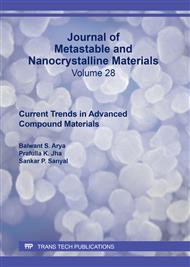p.8
p.12
p.16
p.23
p.27
p.32
p.39
p.43
p.47
A Theoretical Investigation on Structural and Electronic Properties of MgTl
Abstract:
Intermetallic compounds are innovative materials and are far superior to conventional metals and alloys. These intermetallic compounds have a great potential in industrial and technological fields because most of the intermetallic compounds are stronger as well asstiffer at elevated temperature and provide far better corrosion resistance than conventional metals and alloys.Over the past few years the scientific interest in the study of these intermetallic compounds emanates greatly because of their high-tech applications. Our motivation of the present studyMgTl mainly consernedon the physical data generation in context with its possible vast applications .We used a theoretical approach within the local density approximation method to study the structural and electronic properties of MgTl by calculating total energy. As far as our calculations are concerned, the band structure shows the overlapping of conduction and valence band thus itis clear that MgTl in its pure form is a good conductor of heat and electricity and falls in the category of metals. We have also calculated lattice parameters, bulkmodules, first order derivative electronic and lattice heat coefficient and Debye temperature.
Info:
Periodical:
Pages:
27-31
Citation:
Online since:
December 2016
Authors:
Price:
Сopyright:
© 2016 Trans Tech Publications Ltd. All Rights Reserved
Share:
Citation:


